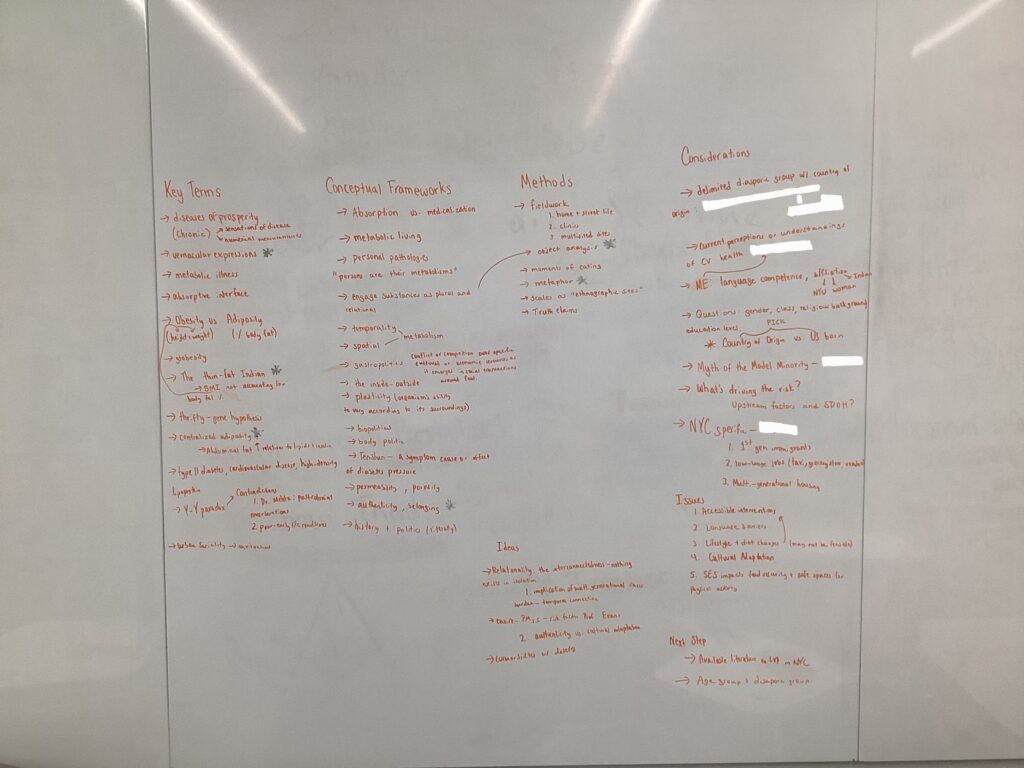In the past month, I’ve learned that diet is a complicated term. It can relate to the simplest universal question of what am I going to eat for dinner? But it can also affect the most personal aspect of our lives – our health. My project revolves around understanding how Indian immigrant workers in NYC broadly perceive diet as a risk factor for cardiovascular disease (CVD). There are many influencing factors I am excited to look at, including acculturation, loneliness, loss of time, spirituality, tradition, etc. Before embarking on conducting my ethnography, I knew I had to lay the necessary foundation. Reading Pertti Pelto’s Applied Ethnography helped me find where to start with this process.
The first step I took was to conduct a literature review. Most of the upcoming work I will be doing will rely on anthropological theories. I knew that in this phase, I wanted to gain an understanding of the physiological and biological theories behind the role of diet in CVD prevalence in Indian populations. I created a simple search strategy (pasted below) and searched PubMed. This search yielded 653 results.
Search Strategy: (Indian* [tiab] OR Indian immigrant* [tiab] OR South Asian* [tiab]) AND (diet [tiab] OR food* [tiab] OR eating [tiab]) AND (heart health OR cardiovascular disease* OR heart disease* OR coronary heart disease OR cardiomyopathy OR rheumatic heart disease OR arrhythmia OR heart failure OR cerebrovascular disease)
I then decided to skim over the first 100 titles and abstracts to see which papers were relevant and worth diving into. After gathering those papers, I read them and took notes. There were several interesting papers from roundtable discussions with physicians on the role of diet and metabolic factors in CVD to assessments of South Asian-specific diet interventions. I summed up my notes in a mind map attached below. It was truly fascinating to dive into the biomolecules (e.g., high-density lipoprotein (HDL), LDL, cholesterol, and saturated/unsaturated fatty acids) I’ve learned about in class and make the connections between my knowledge and the scientific literature.
I have also been continuing to read Metabolic Living, Harris Solomon’s ethnography on “globesity” in Mumbai, India. A little while ago, I did some mind-mapping using Solomon’s book as my main anchor to help me connect some broad ideas I have for my mini-ethnography.
In addition to the literature review, a goal I established at the beginning of this process was to speak with several research professionals working in this area. I was fortunate to get an opportunity to speak with several physicians, community health workers, and public health professionals involved with the Mediators of Atherosclerosis in South Asians Living in America (MASALA) Study. It is the first longitudinal study conducted with South Asians looking at CVD. After these conversations I’ll have this week, I’ll incorporate my takeaways into my mind-map and proceed with the process.


